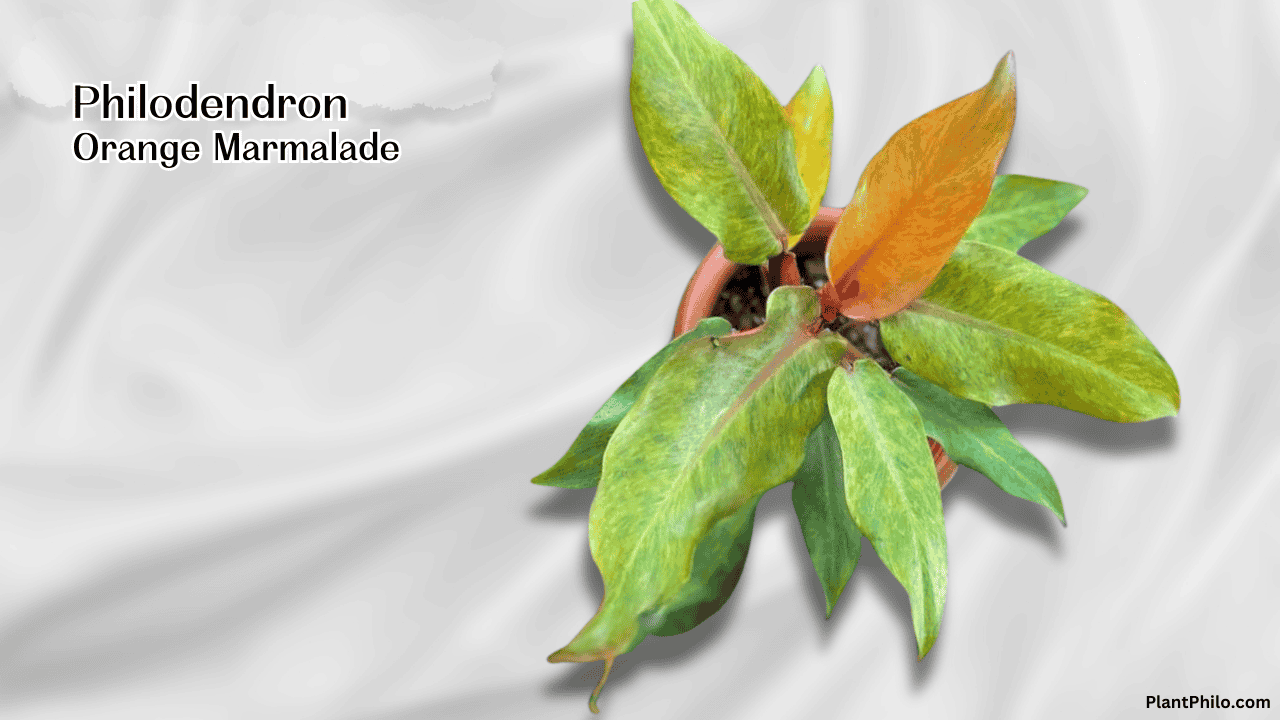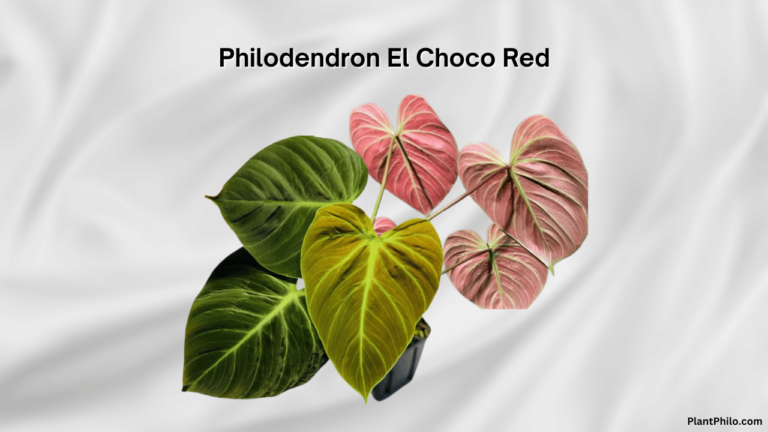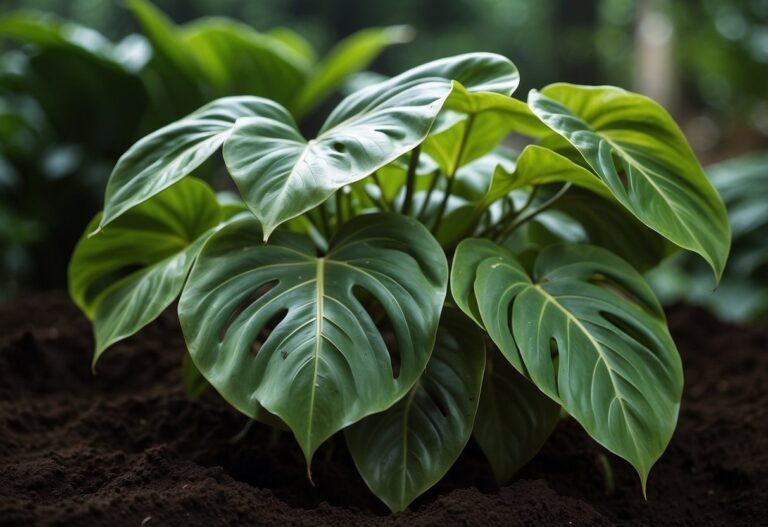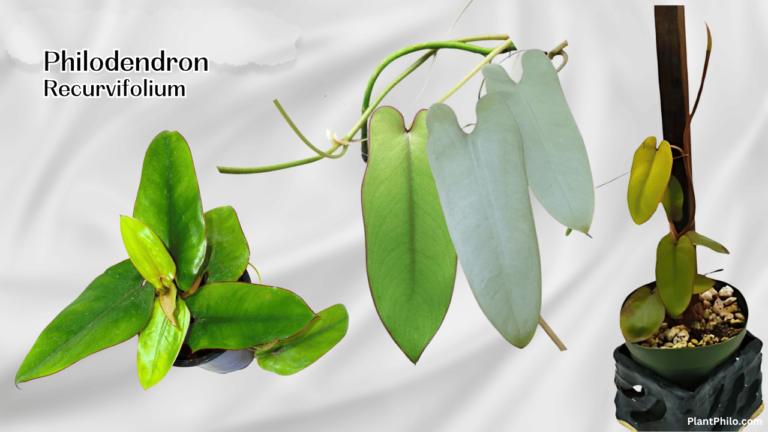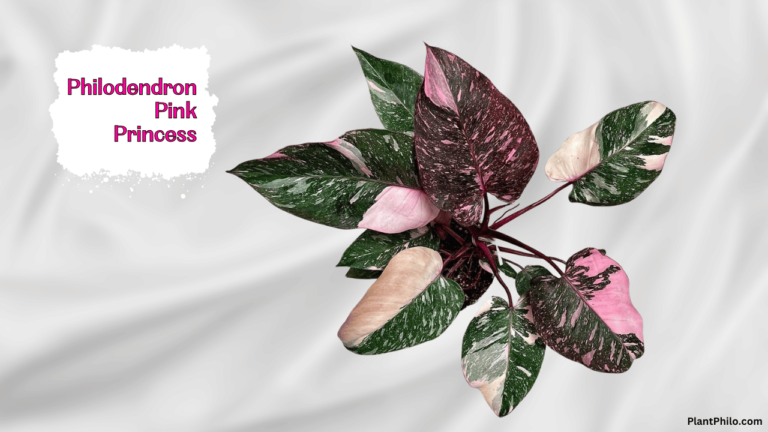The A – Z of Philodendron Orange Marmalade
Ever seen a plant that looks like it’s been dipped in a vat of citrusy goodness? That’s Philodendron Orange Marmalade for you—a plant with a name as vibrant as its foliage.
This eye-catching Philodendron is not just about looks; it’s a unique specimen that can add a splash of color and life to any indoor garden.
Whether you’re a seasoned plant enthusiast or a curious beginner, understanding the intricacies of Philodendron Orange Marmalade can be a game changer. Let’s delve into what makes this plant stand out and how you can keep it thriving in your home.
Philodendron Orange Marmalade
Philodendron Orange Marmalade is a captivating variety known for its striking orange-colored foliage. Unlike other Philodendrons that often sport green or dark hues, this variety flaunts vibrant orange leaves that can range from a deep, warm tangerine to a lighter, more pastel shade. The color alone makes it a conversation starter in any plant collection.
Orange Marmalade At a Glance
| Feature | Details |
| Scientific Name | Philodendron ‘Orange Marmalade’ (Often referred to as Philodendron Quadricolor) |
| Origin | Hybrid Cultivar |
| Growth Habit | Climbing |
| Leaf Shape | Elongated, lance-shaped to heart-shaped |
| Leaf Color | New leaves emerge bright orange, mature to mottled green with gold flecks |
| Light Needs | Bright, indirect light |
| Water Needs | Allow soil to dry out slightly between waterings |
| Humidity | High humidity (60-80%) |
| Soil | Well-draining, airy mix rich in organic matter |
| Fertilizer | Balanced liquid fertilizer during the growing season |
| Propagation | Stem cuttings |
| Pests & Diseases | Susceptible to common houseplant pests and root rot if overwatered |
| Toxicity | Toxic to pets and humans if ingested |
Characteristics of Philodendron Orange Marmalade
- Leaf Color: The standout feature is its vibrant orange foliage, which can vary in intensity depending on light conditions and plant maturity.
- Leaf Shape: The leaves are heart-shaped with a glossy finish, creating a lush and full appearance.
- Growth Habit: It is a climbing plant that can be grown as a vine or trained to climb a moss pole.
Care Requirements for Philodendron Orange Marmalade
Proper care is essential to maintain the vibrant color and health of Philodendron Orange Marmalade. Here’s what you need to know to keep it flourishing.
Light
Philodendron Orange Marmalade thrives in bright, indirect light. Direct sunlight can scorch its leaves and dull its vibrant color.
Place it near a window with filtered light or use grow lights if natural light is insufficient. Think of it as a plant that enjoys a gentle sunbath rather than a sunburn. If you notice the colors fading or the plant becoming leggy, it’s a sign it may need more light.
Watering
Like many tropical plants, Philodendron Orange Marmalade prefers its soil to remain consistently moist but not waterlogged. Water the plant when the top inch of soil feels dry. Overwatering can lead to root rot, so make sure the pot has good drainage.
Picture it as a delicate balance—just enough water to keep it hydrated but not so much that it feels like it’s swimming. Be mindful of seasonal changes; during the winter months, the plant may require less frequent watering.
Soil
A well-draining soil mix is crucial for this plant. A typical aroid mix with components like peat moss, perlite, and orchid bark works well. This combination ensures that excess water drains away quickly, preventing root rot.
Think of it as a cozy bed for your plant’s roots—supportive but not soggy. If you notice the soil compacting over time, consider repotting the plant to refresh the soil and provide more space for growth.
Humidity
Philodendron Orange Marmalade thrives in high humidity, ideally between 60% and 80%. If you live in a dry climate, consider using a humidifier or placing a tray of water near the plant. The goal is to mimic its natural tropical habitat where humidity levels are high and consistent.
For added humidity, mist the plant regularly, especially during the winter when indoor air can be dry. A pebble tray with water beneath the plant can also help increase humidity.
Temperature
This Philodendron prefers warm temperatures, ideally between 65°F and 85°F (18°C to 29°C). Avoid placing it in drafty areas or near cold windows, as sudden temperature changes can stress the plant. Think of it as a tropical vacation—it enjoys warmth and a steady climate. Temperature fluctuations can cause the plant to drop leaves or slow its growth, so try to keep it in a stable environment.
Fertilization
Feed your Philodendron Orange Marmalade with a balanced, water-soluble fertilizer every 4-6 weeks during the growing season (spring and summer). Reduce feeding in the fall and winter when the plant’s growth slows.
A well-fed plant is like a well-nourished athlete—ready to perform at its best. Over-fertilizing can lead to salt buildup and potential leaf burn, so follow the recommended dosage and flush the soil with water periodically to prevent accumulation.
Common Problems and Solutions
Despite your best efforts, issues may arise with your Philodendron Orange Marmalade. Here’s how to tackle common problems:
Yellowing Leaves
If the leaves turn yellow, it might be a sign of overwatering or poor drainage. Check the soil moisture and ensure the pot has adequate drainage holes.
Yellowing leaves can also indicate a nutrient deficiency, so regular fertilization can help. If the yellowing persists, consider adjusting your watering schedule and checking for root health.
Leaf Drop
Leaf drops can occur due to sudden changes in temperature or drafts. Ensure the plant is in a stable environment with consistent temperature and humidity. Also, check for pests or diseases that might be affecting the plant. If the leaf drop is severe, inspect the roots and soil to ensure they are not the source of the problem.
Pests
Common pests that may attack Philodendron Orange Marmalade include spider mites, aphids, and mealybugs. Regularly inspect the plant for signs of these pests and treat infestations promptly with insecticidal soap or neem oil. Keeping the plant clean and occasionally wiping the leaves with a damp cloth can also help prevent pest problems.
Propagation Tips for Philodendron Orange Marmalade
Philodendron Orange Marmalade can be propagated easily through stem cuttings. Here’s a simple guide to propagate this plant successfully:
- Select a Healthy Stem: Choose a healthy stem with at least one node (the point where leaves attach to the stem). The node is crucial for root development.
- Cut and Prepare: Use a clean, sharp knife or scissors to make a cut just below the node. Remove any excess leaves to avoid rot.
- Rooting Medium: Place the cutting in a glass of water or a pot with a well-draining soil mix. If using water, ensure that the node is submerged while the leaves remain above the water line.
- Provide Conditions: Keep the cutting in bright, indirect light and maintain high humidity. Roots should start developing within a few weeks. If using soil, keep it moist but not waterlogged.
- Transplant: Once the roots are a few inches long, transplant the cutting into a pot with a suitable soil mix. Ensure the new pot has good drainage to support healthy root growth.
Varieties and Cultivars
While the standard Philodendron Orange Marmalade is already stunning, there are a few notable varieties and cultivars that might interest you:
1. Philodendron Orange Marmalade ‘Sunburst’
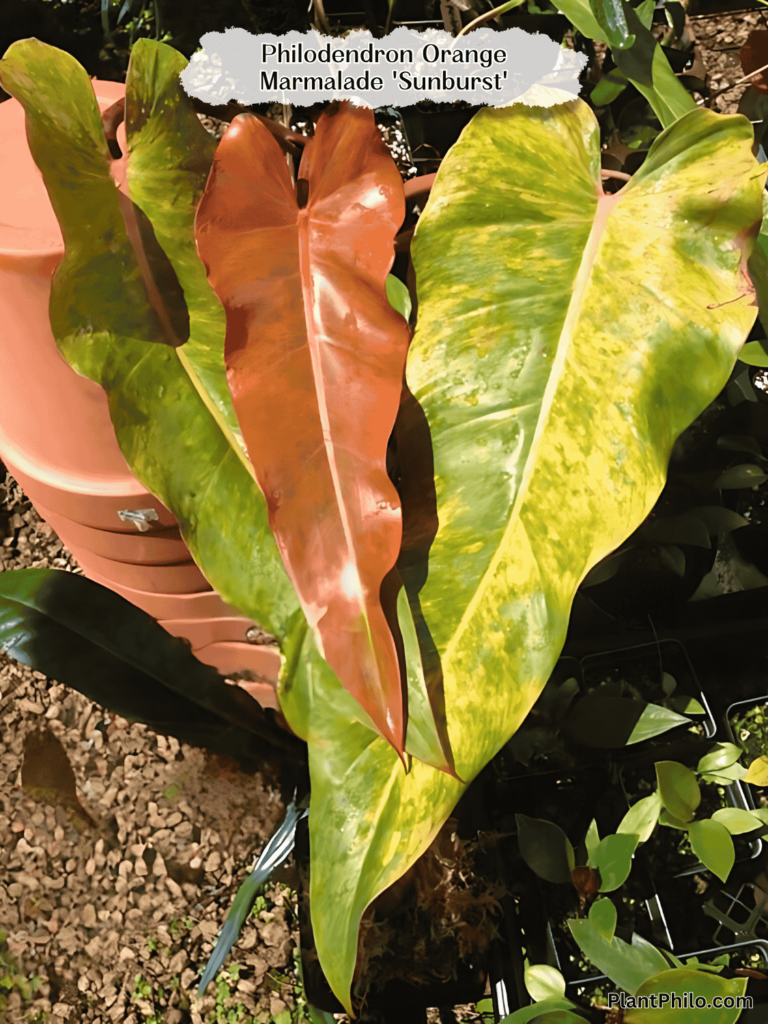
Description: This variety features an even brighter, sunlit shade of orange, giving it an almost neon glow.
Care: Similar care requirements as the standard Orange Marmalade but may need slightly more light to maintain its vivid color. Adjust watering and humidity levels as needed to keep this variety looking its best.
2. Philodendron Orange Marmalade ‘Compact’
Description: A more compact version of the Orange Marmalade, perfect for smaller spaces or desk setups.
Care: Requires similar care to the standard variety but grows at a slower rate, making it easier to manage. Ideal for those who want the vibrant look of Orange Marmalade in a smaller form.
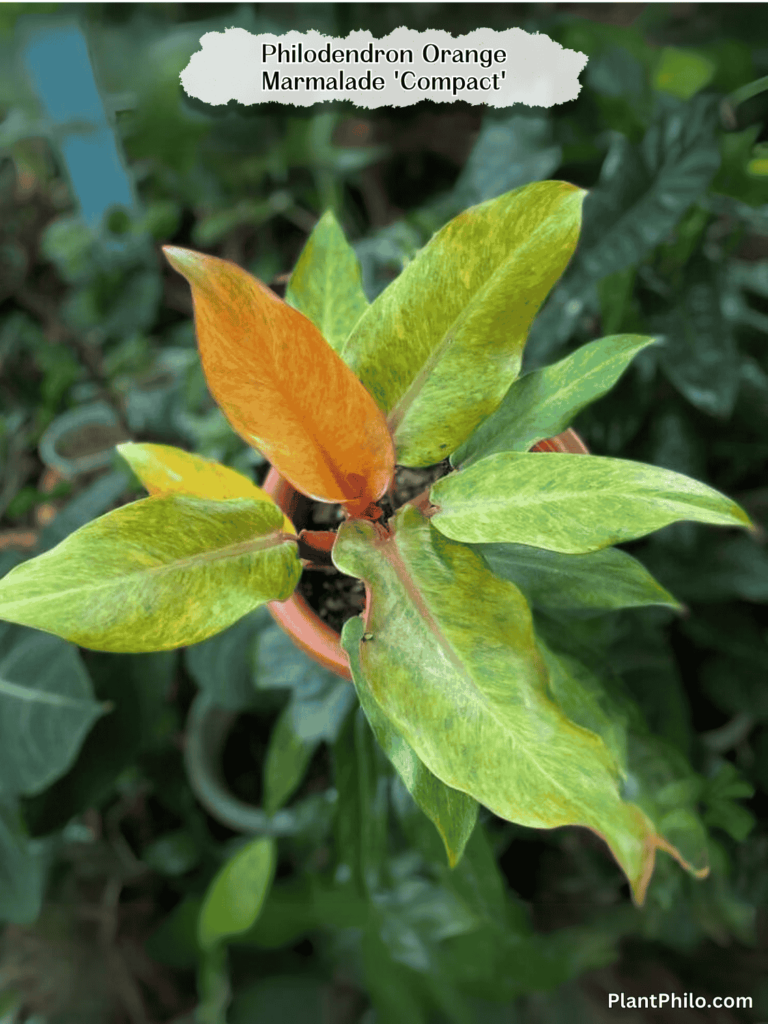
Design Ideas and Placement
Philodendron Orange Marmalade is not only a treat for the eyes but also a versatile plant that can enhance your interior decor. Here are some design ideas for incorporating this vibrant plant into your home:
- Living Room Accent: Place Philodendron Orange Marmalade in a stylish planter and position it near a bright window to create a striking focal point.
- Home Office: Its compact varieties are perfect for adding a splash of color to your desk or workspace, providing both beauty and a touch of nature.
- Hanging Basket: The climbing habit of this plant makes it an excellent candidate for hanging baskets or high shelves where it can cascade gracefully.
Seasonal Care Adjustments
Adapting your care routine to the changing seasons is key to keeping your Philodendron Orange Marmalade healthy.
Spring and Summer
During these warmer months, the plant will be actively growing. Increase watering frequency and fertilize regularly to support its growth. Ensure the plant receives ample light and maintains high humidity.
Fall and Winter
As temperatures drop and daylight decreases, the plant’s growth will slow down. Reduce watering and stop fertilizing to match the plant’s reduced activity. Keep the plant away from drafts and cold windows to avoid stress.
Conclusion
Philodendron Orange Marmalade is a standout plant that can add a burst of color and vibrancy to any indoor garden. With the right care, including proper lighting, watering, and humidity, this plant can thrive and become a focal point in your home.
Whether you’re adding it to your collection or propagating it for friends, understanding its needs will help you keep it looking its best. Embrace the unique charm of Philodendron Orange Marmalade, and let its vibrant foliage brighten your indoor space.
Why are the new leaves on my Philodendron Orange Marmalade not orange?
Several factors can affect the intensity of the orange coloration, including light levels, maturity of the plant, and even seasonal variations. Ensure it receives bright, indirect light and be patient as new leaves mature and develop their full color potential.
How often should I repot my Philodendron Orange Marmalade?
Repot every 1-2 years or when the roots become overcrowded. Spring is the ideal time for repotting, giving your plant a fresh start for the growing season.
Can I grow my Philodendron Orange Marmalade outdoors?
Yes, but only in tropical or subtropical climates with high humidity and filtered light. Protect it from direct sunlight and extreme temperatures.
Why are the leaves on my Philodendron Orange Marmalade turning yellow?
Yellowing leaves can indicate overwatering, underwatering, or nutrient deficiencies. Check the soil moisture and adjust your watering accordingly. Consider fertilizing during the growing season if nutrient deficiency is suspected.
What are the signs of overwatering in a Philodendron Orange Marmalade?
Mushy stems, yellowing leaves, and a foul odor from the soil are telltale signs of overwatering. Allow the soil to dry out slightly between waterings and ensure proper drainage.
Can I propagate my Philodendron Orange Marmalade from a leaf cutting?
Unfortunately, leaf cuttings won’t produce new plants. You’ll need a stem cutting with at least one node for successful propagation.
Why are the new leaves on my Philodendron Orange Marmalade smaller than the older ones?
Several factors can contribute to smaller new leaves, including insufficient light, nutrient deficiencies, or the plant adjusting to a new environment. Ensure optimal growing conditions and be patient as the plant establishes itself.
Is the Philodendron Orange Marmalade rare?
Yes, it’s considered a rare and highly sought-after aroid due to its unique coloration and limited availability.
Where can I buy a Philodendron Orange Marmalade?
Look for reputable plant sellers specializing in rare aroids. Online retailers and specialty nurseries might carry this cultivar, but be prepared for a potentially higher price tag due to its rarity.
How fast does the Philodendron Orange Marmalade grow?
With proper care and optimal conditions, it can exhibit moderate to fast growth, especially during the growing season. Providing a support structure for climbing can further encourage vigorous growth and larger leaves.

